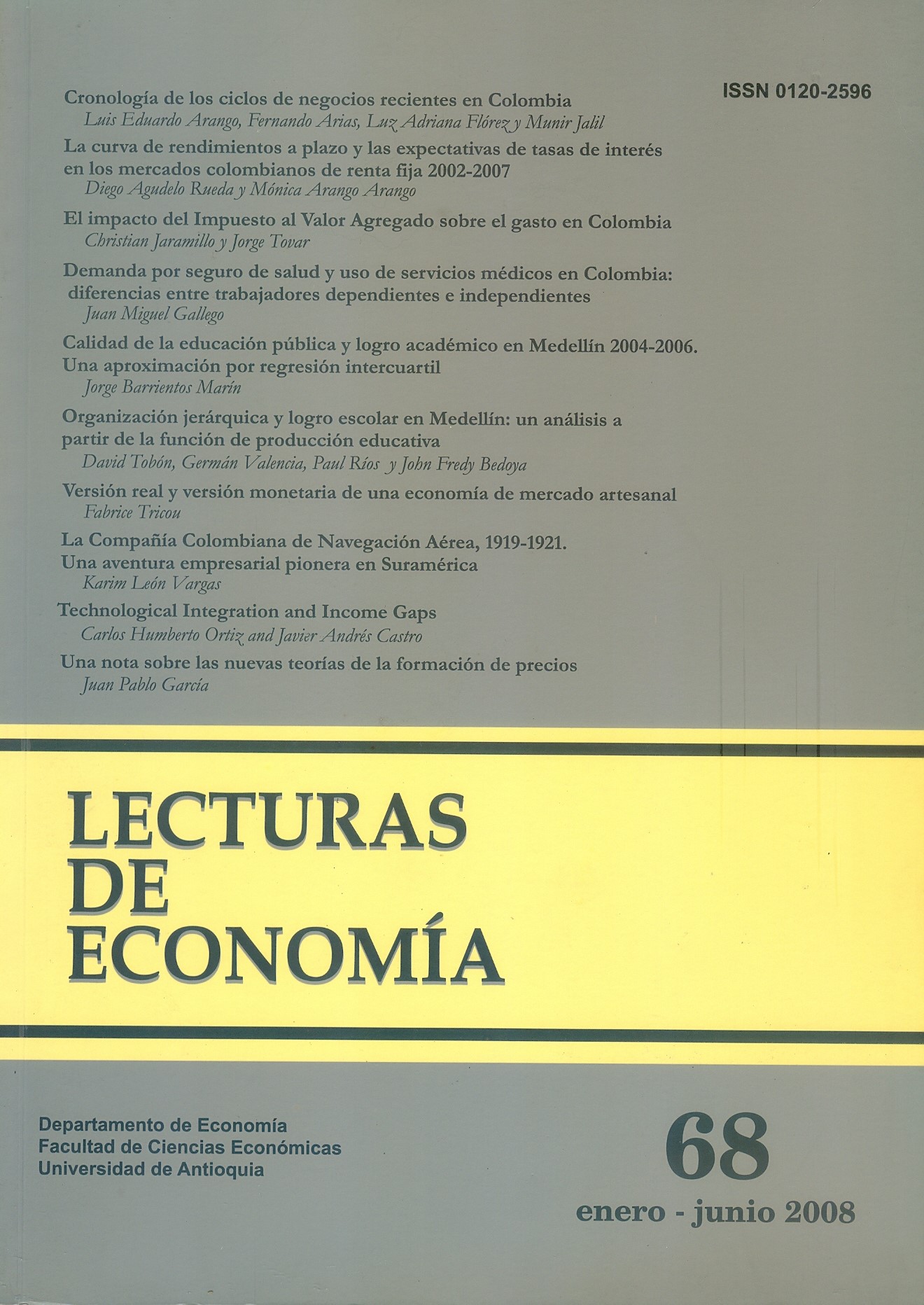Technological Integration and Income Gaps
DOI:
https://doi.org/10.17533/udea.le.n68a271Abstract
Leontief (1963) sostiene que los países subdesarrollados son pobres porque son en gran medida, económicamente menos diversificados. Este artículo muestra que un modelo de equilibrio general con una estructura de insumo-producto estable y con una externalidad de la productividad generada por diversificación de factores, puede ser consistente con la hipótesis de Leontief. Una versión del modelo en economía abierta permite la posibilidad de violar el teorema de la igualación del precio de los factores, permitiendo así que las economías desarrolladas obtengan una alta remuneración de capital y un alto nivel de ingreso. Se presenta alguna evidencia empírica sobre la relación entre la integración tecnológica y el ingreso real.
Palabras clave: Insumo-producto, integración tecnológica, brecha del ingreso, estructuras tecnológicas asimétricas, igualdad de los precios de los factores. Clasificación JEL: C67, D57, F11, L60, O14.
Abstract:
Leontief (1963) claimed that underdeveloped countries are poor because they are by far less economically diversified. This paper shows that a general equilibrium model with a stable input-output structure and a productivity externality due to input diversification may be consistent with Leontief´s hypothesis. An open economy version of the model yields the possibility of breaking the factor price equalization theorem so that developed economies enjoy higher capital remuneration and higher income level. Some empirical evidence on the relationship between technological integration and real income is provided.
Keywords: input-output, technological integration, income gaps, asymmetric technological structures, factor price equalization. JEL Classification: C67, D57, F11, L60, O14.
Résumé:
Leontief (1963) soutient que les pays sous-développés sont pauvres parce qu'ils sont moins diversifiés. Cet article présente un modèle d'équilibre général avec une structure input-output stable et avec une externalité dans la productivité entrainée par la diversification dans les facteurs de production. Il s'agit d'un modèle qui peut être consistant avec l'hypothèse de Leontief. Une version de ce modèle en économie ouverte permet de rejeter le théorème de l'égalisation des prix des facteurs, permettant ainsi que les économies développées puissent obtenir une rémunération de capital élevée et un niveau de revenu également élevée. Nous présentons une évidence empirique sur la relation entre l'intégration technologique et le revenu réel.
Mots clef: structure input-output, intégration technologique, écarts de revenu, structures technologiques asymétriques, égalisation des prix des facteurs. Classification JEL: C67, D57, F11, L60, O14.
Downloads
Downloads
Published
How to Cite
Issue
Section
License
This page, by Universidad de Antioquia, is licensed under a Creative Commons Attribution License.
Authors who publish with this journal agree to retain copyright and grant the journal right of first publication, with the article licensed under a Creative Commons Attribution-NonCommercial-ShareAlike License allowing others to share it as long as they acknowledge its authorship and original publication in this journal.
Authors can enter into separate, additional contractual arrangements for the non-exclusive distribution of the journal's published version of the work (e.g., post it to an institutional repository or publish it in a book), provided that these arrangements be not for profit and the journal be acknowledged as the original source of publication.
Authors are permitted and encouraged to post their papers online (e.g., in institutional repositories or on their websites), as it can lead to valuable exchanges as well as greater citation of the published work.







